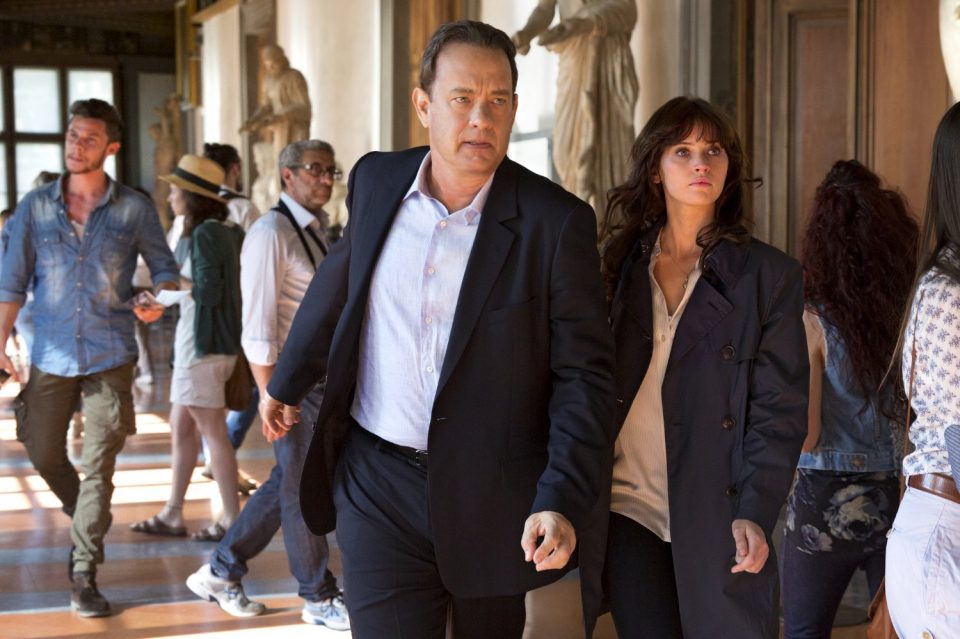Novel to Film: "Inferno"

Anahita Padmanabhan ’18 / Emertainment Monthly Staff Writer
Inferno is the third installment in the film series following the fictional Robert Langdon, the first two being The DaVinci Code and Angels and Demons. For those who may be unfamiliar, Langdon is essentially the Indiana Jones of the art and symbology world. The Harvard professor finds himself time and time again in the midst of international crises, needing to use his knowledge of religious iconology to solve a mystery before something truly terrible happens.

In both the film Inferno and the novel, Langdon wakes up in a hospital in Florence, Italy, unable to recall any details of his situation in the city. He eventually comes to understand that he was on a quest to stop the release of what could be the next plague. But that’s almost the only similarity between the novel and the film.

The characters—the ones who actually make it into the film—are almost nothing like their literary counterparts. The novel version of Dr. Sienna Brooks, who is with Langdon when he is in the hospital and throughout the novel, mentally and physically picks up Langdon’s slack. She comes up with plans, helps solve puzzles when Langdon’s memory fails, and remains in control. In the film, Brooks’ character gets lost as someone to just nudge Langdon along, providing tidbits of info when he needs it.
In the novel, Brooks is tough, resourceful, and above all, brilliant. The film pans briefly to the photos in her apartment, showing a news clipping of her as a child prodigy, but never returns to that story again. It added nothing to her character. In the novel, this side of her is everything, providing insight into why she does things the way she does. The film also strips her of her agency, making it seem like she is at the whim of the men around her, whereas in the novel, she comes to her own conclusions and decisions.
The plot was another point of discrepancy between the novel and film. The film started out like the novel, but definitely didn’t end like the novel, given the love story between the head of the World Health Organization, Dr. Elizabeth Sinskey, and Langdon. Time spent developing that addition could have been used on some of the other plot twists in the novel. The one twist that made it into the film has a couple moving parts to it in the novel; it keeps the readers on their toes, and adds another dimension to the characters.

The ending of the film leaves viewers pretty satisfied—maybe a little sad, but for the most part, the conclusion is wrapped up. In the novel, the ending leaves readers unsure of what to think, in the perfect predicament of being okay while also not being okay. The other books in the series wrap up each mystery nicely, and the fact that this one didn’t do so set it apart; the movie failed to do that.
But perhaps the most egregious error is that the film missed the core thrust of the novel. These are heavily visual books. The Da Vinci Code, Angels and Demons, and Inferno are about art, and seeing Langdon decode its meaning in terms of his quest. This story wasn’t any less influenced by Italian art than the last two films were, and yet those films did an excellent job of showing Langdon solving mysteries as a religious iconographer. Inferno is not quite the same as the previous stories, but the main point of the book is still to solve a mystery by decoding art. The book was still quite visual. Whether it was through physical pieces of art or architecture, or the visions that are Langdon’s only insight into what happened to him, the book lends itself to being seen. But movie-goers didn’t get to see Langdon look at the art, or the intellectual aspect of him decoding it.
The film made for a good action flick. Maybe film-only viewers saw a deviation from the Robert Langdon who searched for the Holy Grail and saved the Vatican. But for those who read the books, Inferno clearly deviated from the stories of the well-dressed Harvard professor readers have come to know, and was truly a letdown.